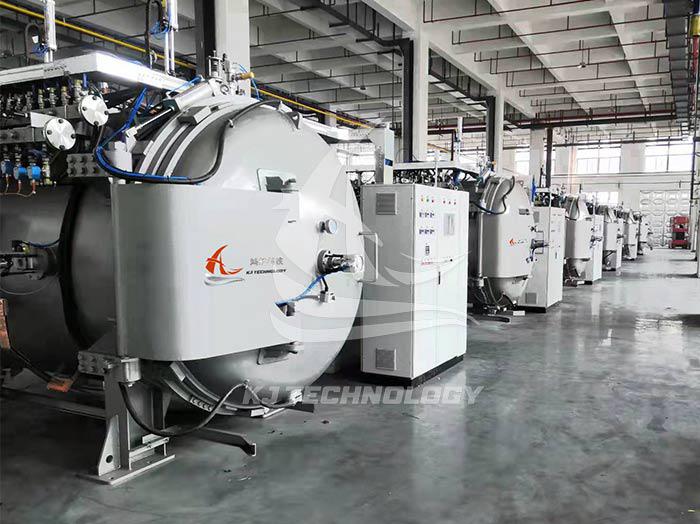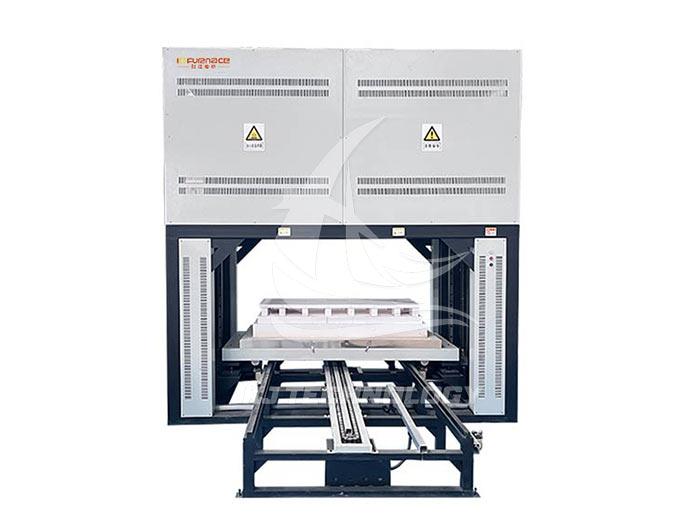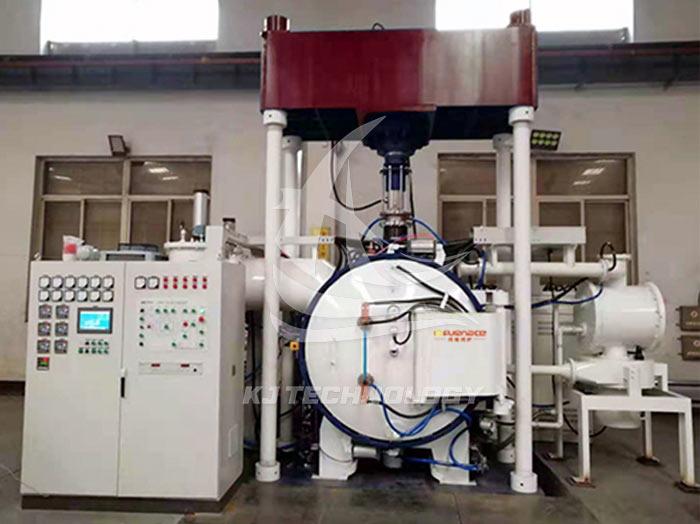Laboratory powder sintering furnace
 08-08-2025 Author: KJ technology
08-08-2025 Author: KJ technology
A laboratory powder sintering furnace is an experimental equipment that uses metal powder or a mixture of metal and non-metal powders as raw materials to produce metal or alloy components through high-temperature sintering. Its working temperature can reach 1200-1300 ℃, or even higher, to meet the sintering requirements of different materials.
1. Core working principle
The laboratory powder sintering furnace undergoes physical and chemical changes between powder material particles through high-temperature heating and insulation processes, ultimately forming dense solid materials. The specific process is as follows:
Preheating stage: The temperature inside the furnace gradually increases to ensure uniform heating of the material and avoid cracking or deformation caused by sudden temperature rise.
Sintering stage: When the temperature rises to the set value (usually below the melting point of the material), atoms or molecules in the material diffuse and rearrange, forming tight bonds between particles, gradually reducing pores, and densification of the material.
Cooling stage: After sintering is completed, the temperature inside the furnace gradually decreases, and the material cools and solidifies, forming the final product. The cooling rate needs to be strictly controlled to avoid an increase in internal stress.
2. Main types and classifications
Laboratory powder sintering furnaces can be classified into various types based on heating methods, furnace atmospheres, and structural forms:
Classified by heating method:
Resistance sintering furnace: sintering is achieved by converting electrical energy into thermal energy through electric heating elements such as resistance wires, silicon carbon rods, silicon molybdenum rods, etc. Resistance sintering furnaces can be divided into indirect heating and direct heating types.
Induction sintering furnace: using electromagnetic induction to excite current inside the metal and heat it up. Induction sintering furnaces can be divided into medium frequency induction sintering furnaces (500Hz-10kHz) and high-frequency induction sintering furnaces (70-200kHz) according to their frequency of use.
Classified by furnace atmosphere:
Ordinary atmosphere sintering furnace: sintering is carried out in air or inert gases such as nitrogen and argon.
Vacuum sintering furnace: Sintering is carried out in a vacuum environment, which can effectively prevent material oxidation and contamination, especially suitable for sintering high-purity materials and high-temperature alloys.
Classified by structural form:
Vertical sintering furnace: The furnace body is vertically placed and suitable for sintering long or cylindrical materials.
Horizontal sintering furnace: The furnace body is placed horizontally and is suitable for sintering disc-shaped or block shaped materials.
3. Key technical parameters
The key technical parameters of the laboratory powder sintering furnace directly affect the sintering effect and material properties:
Working temperature: usually up to 1200-1300 ℃, some high-end equipment can achieve higher temperatures to meet the sintering needs of special materials.
Temperature control accuracy: High precision temperature control (such as ± 1 ℃) can ensure the stability and consistency of the material sintering process.
Heating elements: Common heating elements include resistance wires, silicon carbon rods, silicon molybdenum rods, etc., and their selection depends on the sintering temperature and material properties.
Furnace atmosphere: Air, inert gas, or vacuum environment can be selected according to material requirements to prevent oxidation or promote specific chemical reactions.
Furnace size: Select the appropriate furnace size according to experimental requirements to accommodate materials of different sizes.
4. Application Fields
The laboratory powder sintering furnace plays an important role in multiple fields:
Preparation of Ceramic Materials: Used for preparing high-performance ceramic materials such as alumina, zirconia, and silicon nitride, widely used in fields such as electronics, aerospace, and energy.
Metal material preparation: used for preparing iron-based, copper based, and other related powder metallurgy products, such as high-performance alloy materials, composite materials, etc., to improve the density, hardness, and wear resistance of materials.
Nanomaterial preparation: Prepare nanomaterials through vacuum sintering process to provide support for their research and application.
Preparation of new energy materials: In the field of lithium-ion batteries, it is used to prepare electrode materials to improve the energy density and cycling performance of batteries; In the field of solar energy, key materials are used to prepare solar panels and improve photoelectric conversion efficiency.
Research experiment: Provide a high-temperature sintering platform for research experiments, explore the physical and chemical properties of materials, and provide technical support for the development of new materials.
5. Development Trends
With the continuous development of materials science and technology, laboratory powder sintering furnaces are moving towards the following directions:
Intelligence: equipped with automatic diagnosis, automatic optimization of process parameters, remote monitoring and other functions, improving production efficiency and product quality, and reducing labor costs.
Efficient and energy-saving: By optimizing the furnace structure, adopting new insulation materials, and high-efficiency heating elements, the thermal efficiency of the sintering furnace is improved, energy consumption is reduced, and green production is achieved.
High precision: In order to meet the high-precision requirements of high-end manufacturing for powder metallurgy products, the temperature control accuracy and atmosphere control accuracy of sintering furnaces will continue to improve.
Large scale and miniaturization: On the one hand, in order to meet the production needs of large powder metallurgy components, sintering furnaces will develop towards larger scale; On the other hand, in order to meet the production needs of small and micro powder metallurgy products and the experimental needs of scientific research institutions, miniaturized and micro sintering furnaces will also be further developed.








